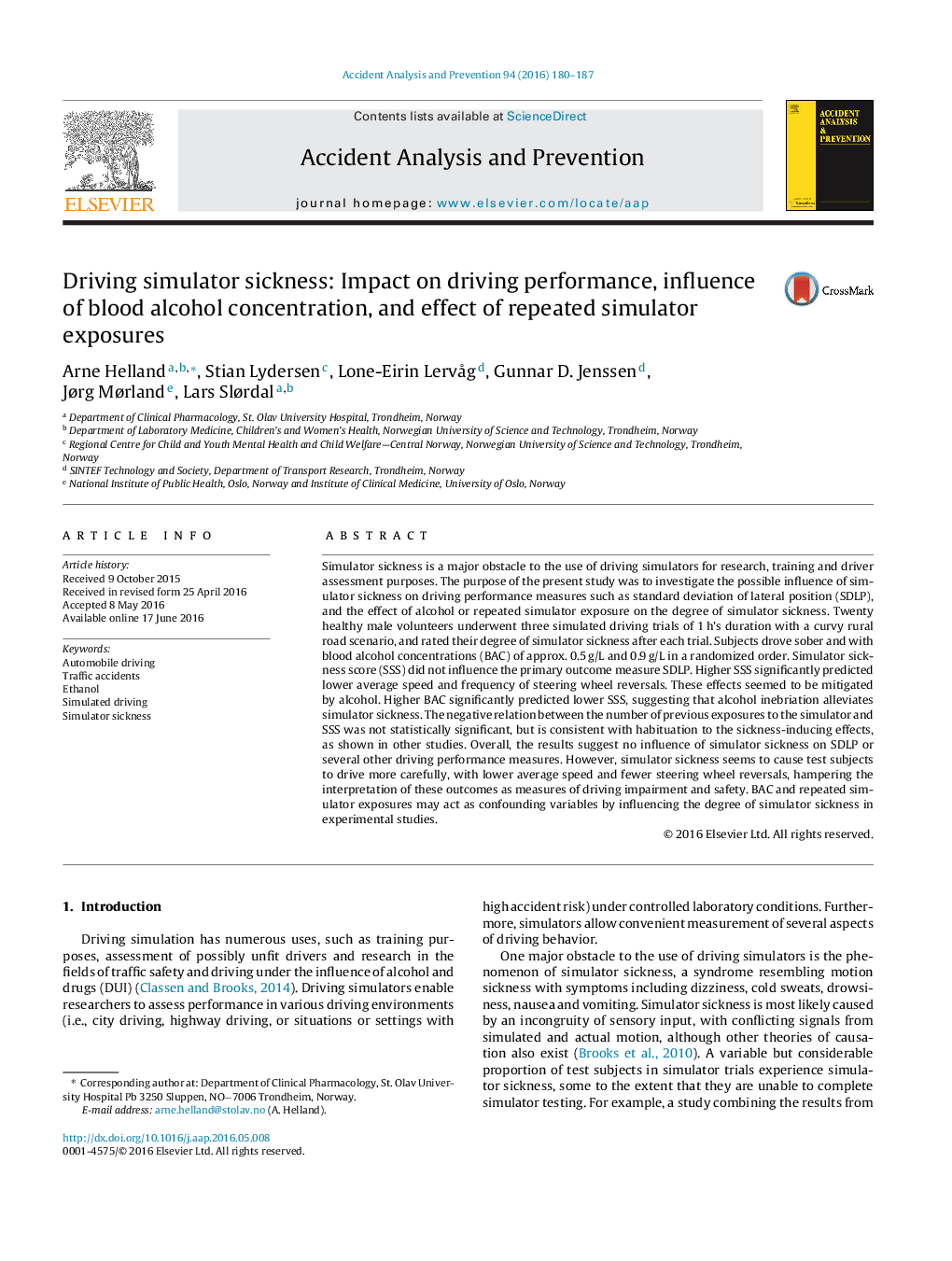| کد مقاله | کد نشریه | سال انتشار | مقاله انگلیسی | نسخه تمام متن |
|---|---|---|---|---|
| 572020 | 1452903 | 2016 | 8 صفحه PDF | دانلود رایگان |
• Simulator sickness reduced average speed and steering wheel reversal frequency.
• Simulator sickness did not influence standard deviation of lateral position (SDLP).
• Higher blood alcohol concentration decreased simulator sickness scores.
• Simulator sickness may confound and introduce bias in experimental studies.
Simulator sickness is a major obstacle to the use of driving simulators for research, training and driver assessment purposes. The purpose of the present study was to investigate the possible influence of simulator sickness on driving performance measures such as standard deviation of lateral position (SDLP), and the effect of alcohol or repeated simulator exposure on the degree of simulator sickness. Twenty healthy male volunteers underwent three simulated driving trials of 1 h’s duration with a curvy rural road scenario, and rated their degree of simulator sickness after each trial. Subjects drove sober and with blood alcohol concentrations (BAC) of approx. 0.5 g/L and 0.9 g/L in a randomized order. Simulator sickness score (SSS) did not influence the primary outcome measure SDLP. Higher SSS significantly predicted lower average speed and frequency of steering wheel reversals. These effects seemed to be mitigated by alcohol. Higher BAC significantly predicted lower SSS, suggesting that alcohol inebriation alleviates simulator sickness. The negative relation between the number of previous exposures to the simulator and SSS was not statistically significant, but is consistent with habituation to the sickness-inducing effects, as shown in other studies. Overall, the results suggest no influence of simulator sickness on SDLP or several other driving performance measures. However, simulator sickness seems to cause test subjects to drive more carefully, with lower average speed and fewer steering wheel reversals, hampering the interpretation of these outcomes as measures of driving impairment and safety. BAC and repeated simulator exposures may act as confounding variables by influencing the degree of simulator sickness in experimental studies.
Journal: Accident Analysis & Prevention - Volume 94, September 2016, Pages 180–187
